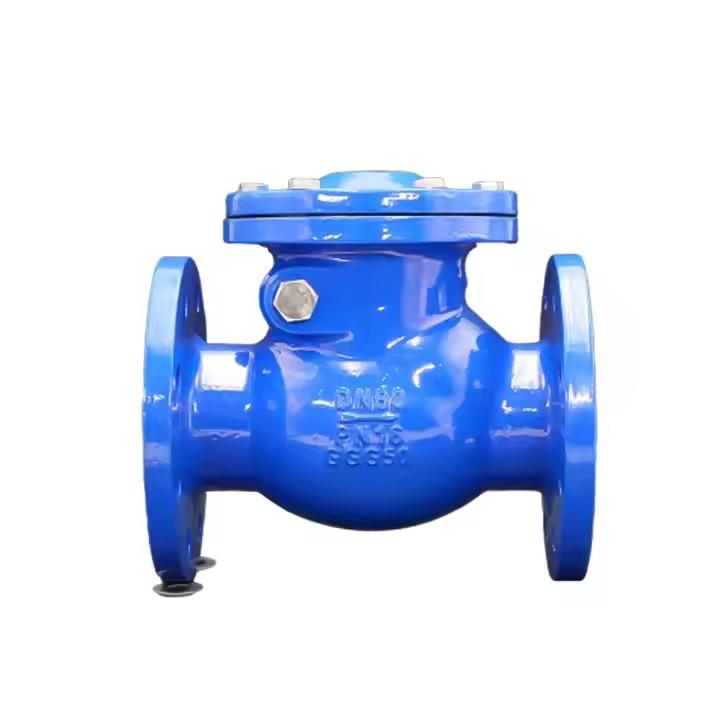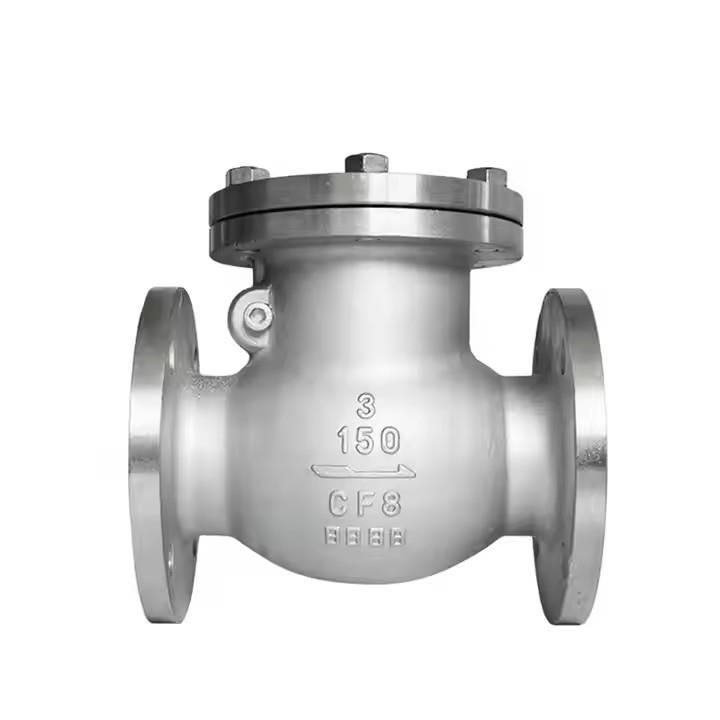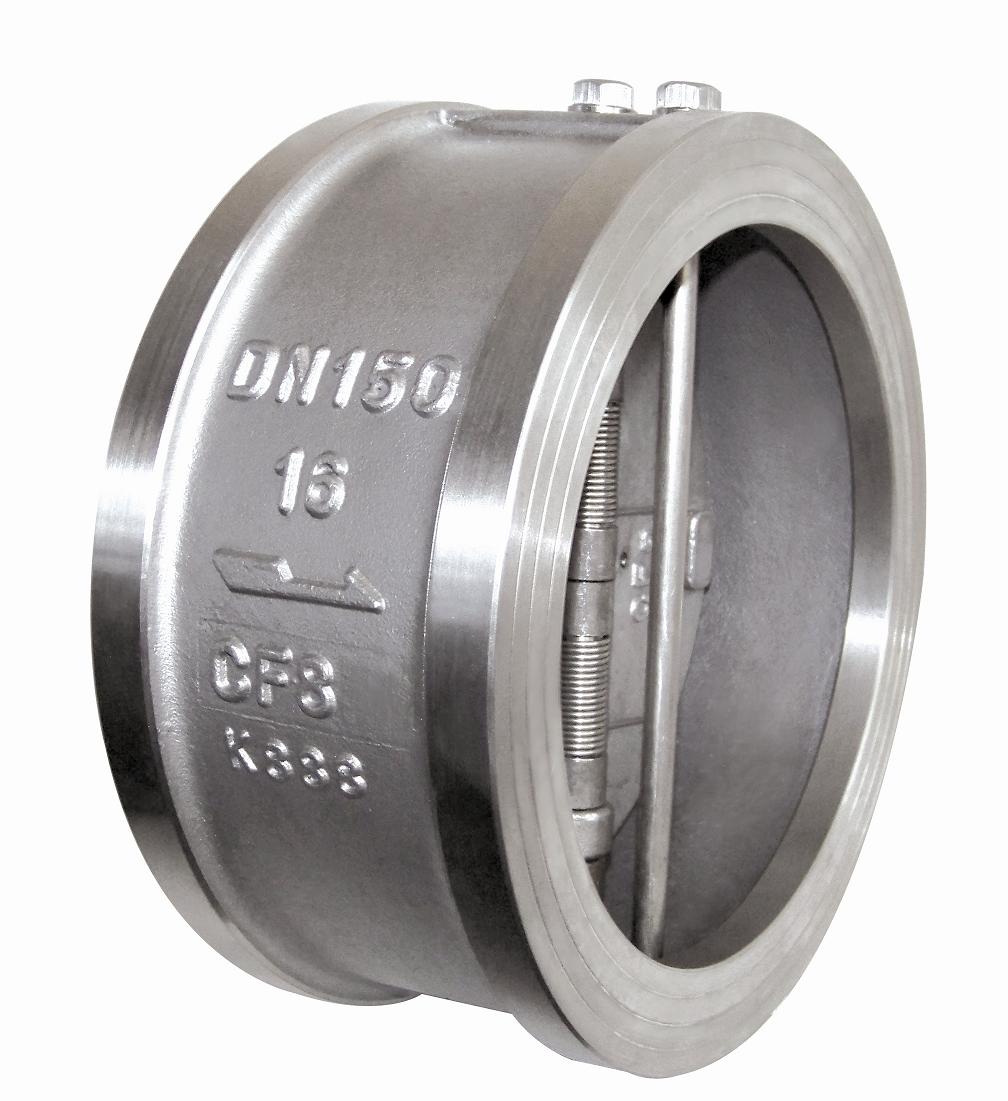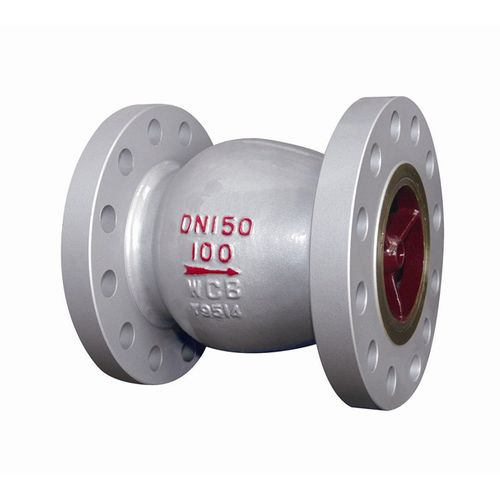Silent Check Valve EN12334

The silent check valve is mainly used in the pipelines of the water system and installed at the outlet of the water pump, and also known as a non-return valve, one-way valve, and reflux valve. It is composed of parts such as the valve body, valve disc, valve stem and spring.
It has a short closing stroke and a small reverse flow speed at the moment of closing. The valve disc adopts a soft rubber sealing, and the spring return enables the valve to open and close without impact, reducing noise and the water hammer effect, so it is called a silent check valve. Its valve core adopts a lifting structure and belongs to a type of lifting check valve.
The silent check valve usually has the following characteristics:
- Silent effect: It closes quickly when the pump stops, preventing the generation of huge water hammer noise.
- Low pressure loss: The internal flow channel design results in extremely low pressure loss, making it suitable for situations that require efficient fluid control.
- Wide range of applicable media: It is suitable for water and weakly corrosive fluids.
- Multiple material options: The valve body materials include cast iron, ductile iron, stainless steel, etc., meeting the requirements of different working environments.
Part Material
| Number | Part Name | Material |
| 1 | Guide | GGG40 |
| 2 | Body | GG25/GGG40 |
| 3 | Guiding stem | F4 |
| 4 | Spring | SS316 |
| 5 | Seal | NBR/EPDM |
| 6 | Disc | GGG40 |
Dimensions(mm)
| DN | 2′ | 2.5″ | 3′ | 4″ | 5″ | 6″ | 8″ | 10″ | 12″ |
| L | 100 | 120 | 140 | 170 | 200 | 230 | 301 | 370 | 410 |
| D | 165 | 185 | 200 | 220 | 250 | 285 | 340 | 405 | 460 |
| D1 | 125 | 145 | 160 | 180 | 210 | 240 | 295 | 355 | 410 |
| D2 | 50 | 65 | 80 | 105 | 127 | 145 | 194 | 245 | 300 |
| n-d | 4-19 | 4-19 | 8-19 | 8-19 | 8-19 | 8-23 | 12-23 | 12-26.5 | 12-26.5 |
The data is for reference only, please consult sales@wayvalve.com for details.
The application of silent check valves mainly including the following aspects:
- Water supply and drainage systems: Silent check valves can be installed in water supply and drainage systems to prevent the backflow of water, avoid the generation of water hammer and water hammer noise, thereby reducing noise and equipment damage.
- Fire protection systems: In fire protection systems, silent check valves can effectively prevent the backflow of water, protect fire protection equipment, and at the same time reduce noise interference.
- Heating, ventilation and air conditioning (HVAC) systems: Silent check valves used in HVAC systems can reduce the impact and noise of fluids in the pipelines, ensuring the stable operation of the system.
- Industrial systems: In various industrial pipelines, silent check valves can prevent the backflow of media, protect equipment and pipelines, and also reduce noise pollution.
- Water treatment systems: During the water treatment process, silent check valves can efficiently prevent the backflow of water and significantly reduce the noise during operation.

What does a silent check valve do?
A silent check valve is used to prevent backflow in a piping system while minimizing noise. It allows fluid to flow in one direction only. When the flow in the normal direction occurs, the valve opens to enable smooth passage of the fluid. When the flow reverses or stops, the valve quickly closes by means of a spring-loaded mechanism or other designs, preventing the fluid from flowing backward. This helps to protect the system from damage caused by backflow and also reduces the noise and vibration that might be associated with the closing of a traditional check valve.
What is the difference between swing and silent check valves?
Swing check valves and silent check valves differ in several aspects:
1, Structure and Working Principle: Swing check valves have a disc that swings on a hinge to open and close, allowing flow in one direction. Silent check valves usually use a spring – loaded disc or other mechanisms. The spring helps to quickly close the disc, reducing water hammer and noise.
2, Noise Level: As the name implies, silent check valves are designed to operate more quietly. The spring – assisted closing mechanism minimizes the impact and vibration when the valve closes, reducing noise. Swing check valves, on the other hand, may produce more noise, especially when the flow changes rapidly or when the disc slams shut.
3, Installation Requirements: Swing check valves can be installed in both horizontal and vertical pipelines, but the disc should be in the correct orientation. Silent check valves also have flexible installation options, but the specific requirements may vary depending on the type and design. Some silent check valves are better suited for certain flow conditions or pipeline layouts to ensure proper operation.
4, Flow Characteristics: Swing check valves offer relatively low – resistance flow when open, but the disc movement may cause some turbulence. Silent check valves are designed to provide smooth flow and quick closing, which can help to improve the overall efficiency of the system and reduce the risk of backflow.
INQUIRY






